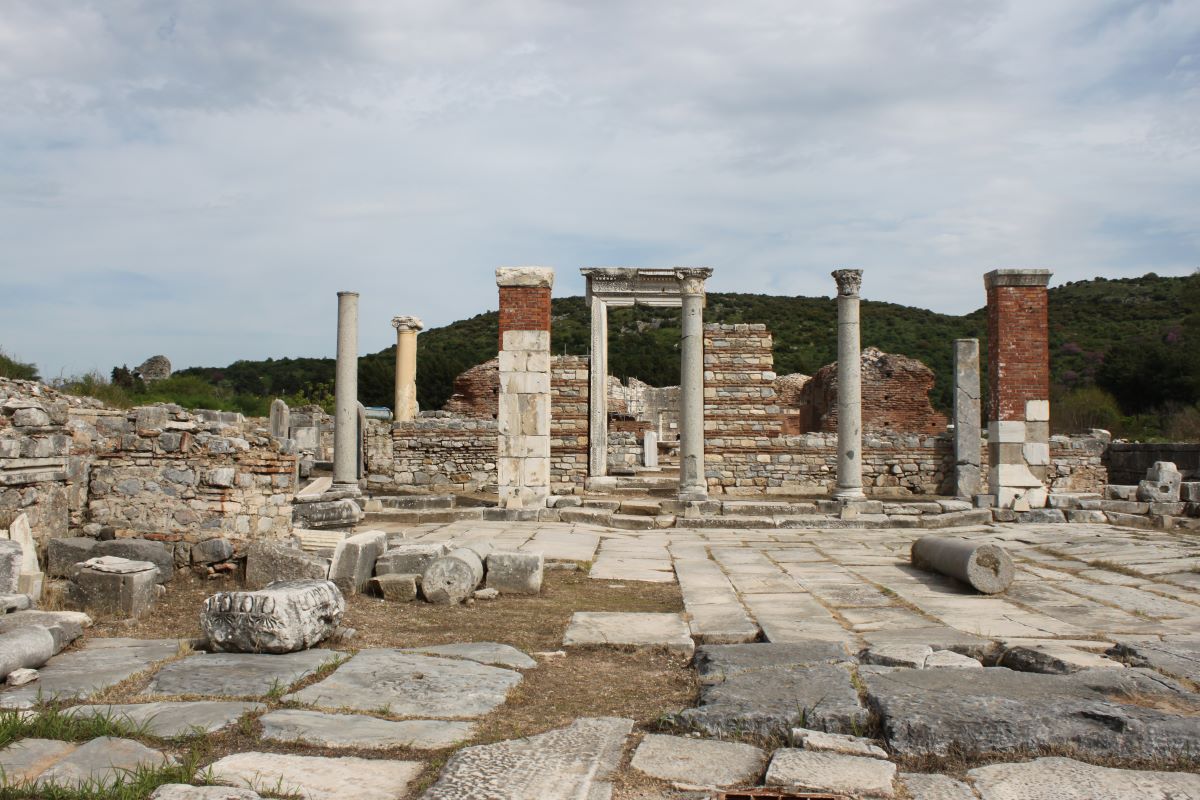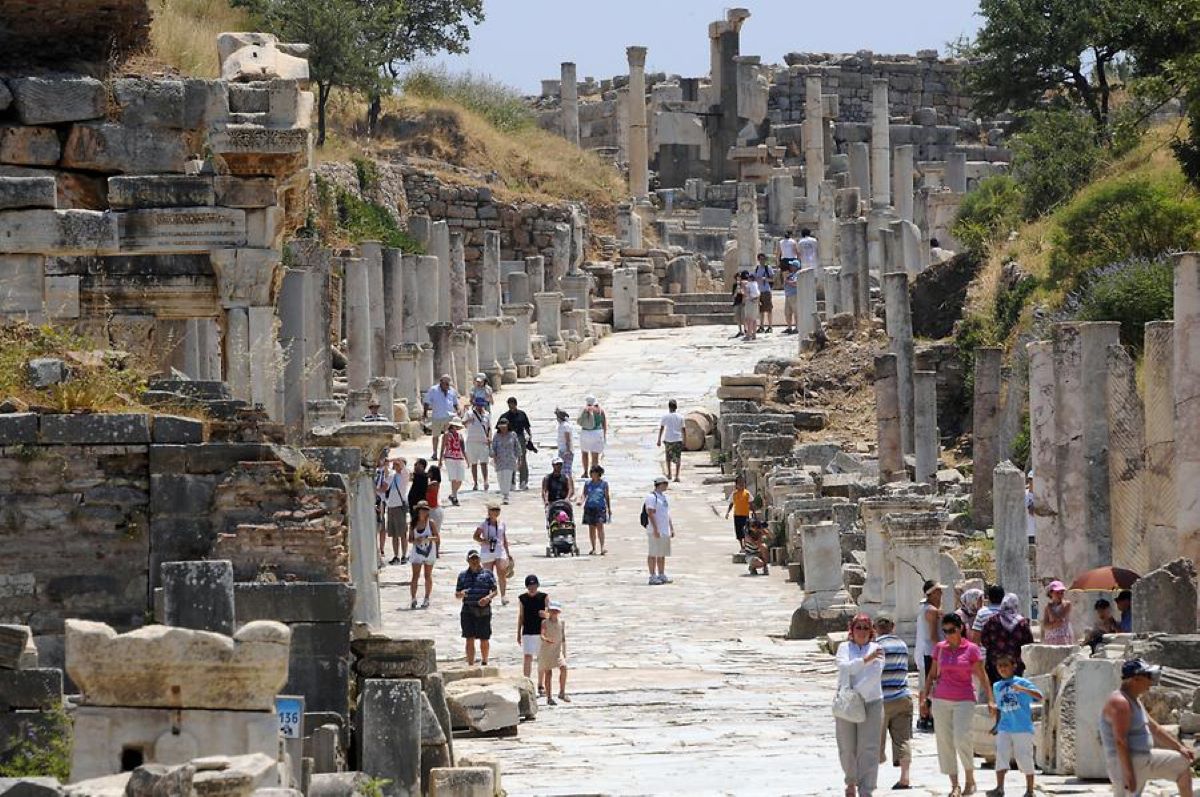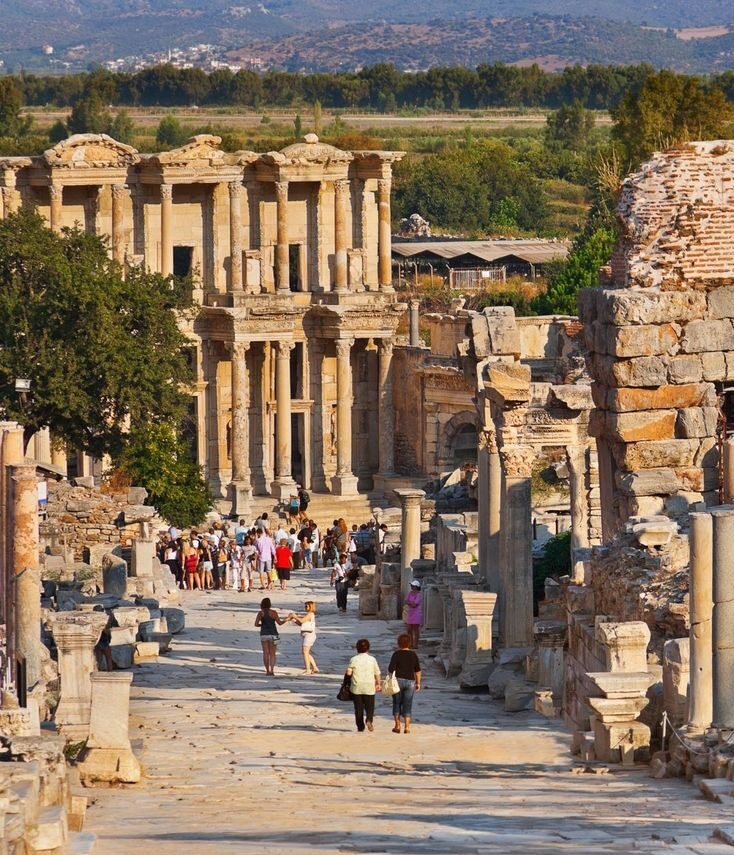The ancient city of Ephesus is a site of remarkable historical significance, with a…

Exploring the Seven Churches of Revelation: History and Significance in Christianity
The Seven Churches of Revelation hold significant importance in the Christian faith, as they are the recipients of the letters in the book of Revelation. These churches are located in modern-day Turkey and include Ephesus, Smyrna, Pergamum, Thyatira, Sardis, Philadelphia, and Laodicea. Each city has its unique history, culture, and significance in Christianity. In this blog post, we will delve into the history and significance of these seven churches, starting with Ephesus and the other six cities.
Ephesus: Church Lost Fist Love
Ephesus was an ancient Greek city located on the western coast of modern-day Turkey. It was founded by Greek colonists in the 10th century BC, and throughout its history, it was a significant center of trade, culture, and religion. In the first century AD, Ephesus became one of the most important cities for early Christianity, as it was visited by the Apostle Paul and later became the site of one of the Seven Churches of Revelation.
Ephesus was a crucial center of early Christianity, and it played a significant role in the spread of the faith throughout the Roman Empire. The Apostle Paul visited the city during his second missionary journey and established a Christian community there. He later wrote the Epistle to the Ephesians, which is one of the most significant books in the New Testament. In addition, the Gospel of John is believed to have been written in Ephesus.
The Epistle to the Ephesians is a letter written by the Apostle Paul to the Christian community in Ephesus. The letter emphasizes the unity of the church and the importance of faith in Jesus Christ. It also discusses the role of the church in spreading the message of salvation to the world. The letter has been influential in Christian theology and has been the subject of much scholarly debate over the centuries.
Ephesus is home to several notable sites related to early Christianity, including the Basilica of St. John, which is believed to be the final resting place of the Apostle John. The city also features the remains of the Temple of Artemis, which was one of the Seven Wonders of the Ancient World. Additionally, the ancient city of Ephesus itself is a fascinating archaeological site, with well-preserved structures such as the Library of Celsus, the Great Theatre, and the Temple of Hadrian. These structures offer a glimpse into the ancient world and provide insight into the lives of early Christians who lived and worshiped in the city.
Smyrna – The Suffering Church
Smyrna, also known as Izmir in modern-day Turkey, was a wealthy port city located on the Aegean coast. It was one of the oldest and largest cities in Asia Minor and played an important role in the region’s commerce and trade. The city had a long and varied history, having been ruled by the Greeks, Persians, and Romans over the centuries.
In the Book of Revelation, Smyrna is one of the seven churches to whom John wrote letters. In his letter to the Smyrnans, John praised the church for its faithfulness despite the suffering and persecution they had faced. He also warned them of further persecution to come and encouraged them to remain faithful unto death.
The church in Smyrna faced intense persecution, especially under the Roman Emperor Domitian. Christians were considered a threat to the Roman state and were often subjected to brutal treatment, including imprisonment, torture, and execution. Despite this, the church in Smyrna remained steadfast in their faith and continued to worship and preach the Gospel.
One of the most significant sites in Smyrna is the ancient Agora, a marketplace that was the center of commercial and social life in the city. The agora was surrounded by shops, temples, and other public buildings, and it was a place where people gathered to buy and sell goods, exchange ideas, and socialize.
Another important site in Smyrna is the Kadifekale Fortress, which sits atop a hill overlooking the city. The fortress was built in the 3rd century BC and was used by various rulers throughout history, including the Romans, Byzantines, and Ottomans. Today, the fortress is a popular tourist attraction and offers stunning views of the city and surrounding landscape.
Smyrna was a city with a rich history and a significant role in the early Christian church. The church in Smyrna faced intense persecution but remained faithful to their beliefs despite the danger. Today, Smyrna is a thriving modern city that still bears the marks of its ancient past.
Pergamum – The Compromising Church
Pergamum, also known as Pergamon, was a prominent ancient Greek city in the region of Mysia. It was known for its remarkable library, second only to the one in Alexandria, and its impressive architecture, including the Altar of Zeus. In the first century, it was also known for its thriving Christian community.
In the Book of Revelation, the church in Pergamum is mentioned as one of the Seven Churches of Asia, and a letter is addressed to the angel of the church. The letter commends the church for holding fast to the name of Jesus and not denying the faith, even in the face of persecution. However, the letter also rebukes the church for tolerating the teachings of Balaam, who led the Israelites astray, and for allowing the teachings of the Nicolaitans, a group that compromised with the pagan culture, to infiltrate the church.
The issue of compromise in the church in Pergamum was a major concern. The Christians were facing persecution and were being pressured to conform to the pagan culture and practices around them. This led to a watering down of the faith and a dilution of the message of the gospel. The church was being influenced by the teachings of false prophets and was in danger of losing its distinctiveness.
One of the most notable sites in Pergamum is the Acropolis, which includes the impressive ruins of the Temple of Trajan and the Temple of Athena. The Altar of Zeus, which is now housed in the Pergamon Museum in Berlin, was one of the most important monuments in the ancient world. Other significant sites include the Asclepion, an ancient medical center, and the Red Basilica, a massive temple dedicated to the Egyptian gods Isis and Serapis that was later converted into a Christian church.
Despite the challenges faced by the church in Pergamum, it continued to thrive and grow in faith. Today, the city serves as a reminder of the importance of standing firm in the face of compromise and remaining true to the teachings of Christ.
Thyatira – The Tolerant Church
Thyatira was a small city located in the province of Asia. It was known for its production of purple dye, which was highly prized in the ancient world. The city also had a significant population of Jews and a thriving trade network.
In the Book of Revelation, the church in Thyatira is addressed in a letter from Jesus himself. The letter praises the church for its good deeds, love, faith, service, and perseverance. However, it also warns the Thyatirans about a woman named Jezebel, who was leading some members of the church astray and encouraging them to participate in idol worship and sexual immorality.
The church in Thyatira was commended for its love and service, but it also had a problem with tolerating false teachings and immoral behavior. This issue of tolerance is still relevant today, as churches and individuals struggle with how to balance acceptance and love for all people with the need to uphold biblical truths and standards of morality.
There are few remains of the ancient city of Thyatira, but there are a few notable sites that can still be visited today. One of these is the remains of a Roman road that ran through the city, which can still be seen in some parts of the modern city. There is also a church dedicated to Saint John the Baptist, which is said to have been built on the site of the original church in Thyatira.
Sardis – The Dead Church
Sardis was an ancient city located in the region of Lydia, in western Anatolia, and was the capital of the Lydian empire. The city was situated on the banks of the Pactolus River and was an important center for trade and commerce. In the 5th century BC, Sardis was captured by the Persians and then later fell under the rule of Alexander the Great.
The letter to the church in Sardis is recorded in Revelation 3:1-6. In this letter, Jesus speaks to the church in Sardis, admonishing them for their spiritual deadness and lack of fruitfulness. He urges them to repent and turn back to the Lord, lest their lampstand be removed.
The issue of spiritual deadness in the church in Sardis is a warning to all churches to guard against complacency and spiritual apathy. The church in Sardis had a reputation of being alive, but in reality, they were dead. They had lost their passion for Christ and had become more concerned with their outward appearances and reputation than with their inward spiritual condition.
The most notable site in Sardis is the Temple of Artemis, one of the largest temples in the ancient world. The temple was built in the 6th century BC and was considered one of the seven wonders of the ancient world. Other notable sites include the ancient Roman gymnasium and theater, the ancient agora, and the acropolis, which contains the ruins of the ancient citadel.
Philadelphia – The Faithful Church
Philadelphia, meaning “brotherly love,” was founded in the 2nd century BC by King Eumenes II of Pergamum. The city was situated in a strategic location, serving as a gateway to the east. It was a center for trade and commerce, and it also had a significant Christian population.
The letter to the Philadelphians in the Book of Revelation commends the church for its faithfulness, despite facing opposition from those who claimed to be Jews but were actually liars. The letter also promises that the church will be kept from the hour of trial that will come upon the whole world.
The church in Philadelphia is praised for its faithfulness in keeping the word of Christ and not denying His name. They had little strength, but they kept Christ’s word and did not deny Him, even in the face of persecution. The church is also praised for its brotherly love, which was a characteristic of the city itself.
One of the most significant sites in Philadelphia is the ancient city walls, which date back to the Hellenistic period. The walls are well-preserved, and visitors can walk along the ancient ramparts and see the city from a unique vantage point. There is also a large Roman arch in the city that was built in the 2nd century AD to honor the Emperor Titus.
Another notable site is the remains of a Byzantine basilica, which dates back to the 5th century AD. The basilica was built on the site of an earlier Christian church and was decorated with beautiful mosaics and frescoes. Visitors can still see the intricate designs and patterns that once adorned the walls and floors of the basilica.
Overall, Philadelphia is a fascinating city with a rich history and a strong Christian heritage. The faithfulness of the church in Philadelphia serves as an inspiration to believers today, reminding us that even in the face of opposition and persecution, we can remain faithful to Christ and His word.
Laodicea – The Lukewarm Church
Laodicea was a wealthy city in ancient times, known for its banking industry, wool trade, and production of a famous eye salve. The city was also home to a significant Jewish population and had a thriving Christian community.
The church in Laodicea received a letter from John in the Book of Revelation, which chastised them for their spiritual apathy and lukewarmness. The letter urged the Laodiceans to repent and turn to Christ wholeheartedly.
The issue of lukewarmness was a significant problem in the church of Laodicea. Despite their wealth and material success, the Laodicean Christians had become complacent in their faith and lacked fervor and zeal for God. This spiritual complacency and lukewarmness were concerning to John, who urged them to renew their commitment to Christ.
The city of Laodicea was destroyed by earthquakes in the 4th century AD, and much of the ancient city remains buried. However, several notable sites have been excavated and can be visited today. These include the ruins of a large theater, an impressive stadium, and several impressive public bathhouses.
The most significant archaeological site in Laodicea is the ancient church, which dates back to the 4th century AD. The church features intricate mosaics and frescoes and is believed to have been one of the earliest Christian worship sites in the city. Laodicea was a wealthy and prosperous city in ancient times, but its church was admonished for being lukewarm in their faith. The ruins of the city and the ancient church offer an insight into the religious and cultural practices of the time, and the letter to the Laodiceans serves as a reminder of the importance of remaining committed and fervent in our faith.
In conclusion, the Seven Churches of Revelation provide a unique glimpse into the early Christian world and the challenges faced by the early believers. Each church had its own distinct characteristics and challenges, as outlined in the letters written to them in the Book of Revelation. Ephesus was praised for its hard work and perseverance but was rebuked for losing its first love. Smyrna was a suffering church that endured persecution and poverty. Pergamum faced challenges from false teachings within the church. Thyatira was praised for its love and faith but rebuked for tolerating false teachings. Sardis was a church that appeared alive but was spiritually dead. Philadelphia was praised for its faithfulness and perseverance despite facing trials. Laodicea was lukewarm and apathetic, in danger of being rejected by Christ.
Studying the Seven Churches of Revelation is important for several reasons. Firstly, it provides a deeper understanding of the early Christian world and the challenges faced by the early believers. It also helps to contextualize the Book of Revelation within its historical and cultural setting. Furthermore, it allows us to reflect on our own spiritual lives and how we can apply the lessons learned from the Seven Churches in our own walk with Christ.
Finally, we encourage everyone to visit these historical sites and learn more about the early Christian world. Walking in the footsteps of the early believers can be a powerful experience that deepens our understanding of the Christian faith. The Seven Churches of Revelation are not just historical artifacts, but they represent the spiritual struggles and triumphs of the early Christian church. By visiting these sites and learning more about early Christianity, we can gain a greater appreciation for our spiritual heritage and a deeper understanding of our faith.



This Post Has 0 Comments